Tillandsia Xerographica [pronounced: zero-grafika] is a truly stunning plant. Its leaves are thick, silvery-white, and often take on beautiful curls depending on the humidity in the environment. It can live upwards of 20 years and grow up to three feet in diameter before send a large orange bloom spike. For these reasons and more, it remains one of the most coveted air plant species available for both novices and collectors. However, did you know it was almost extinct 25 years ago?

These plants are ready to be future mothers now that they have bloomed. Each Xerographica will produce 2-5 offsets in its lifetime.
As a once unregulated trade, the first air plant exporters in Central America harvested tillandsia from the wild. Xerographica was no exception. Due its popularity in the 1980s and 1990s, particularly in Europe, Xerographica was practically erased from its natural habitat in the arid lowland climates of Guatemala and Southern Mexico.
In 1994, after being alerted by agricultural officials in the Netherlands of a suspicious shipment from Guatemala, the Convention on International Trade in Endangered Species of Wild Fauna and Flora (CITES) intervened, declaring T. Xerographica an endangered species. This lead to several years of practically no Xerographica or other air plants being exported from Central America.
Thankfully, due to the necessity to reproduce the now endangered plant, CITES and the respective governments allowed farmers to propagate the plant, albeit with stringent guidelines. By the early 2000s, farmed Xerographica began to be available in increasingly quantities.
Due its restrictive status, certified growers are required to keep a certain number of offsets (most of us know them as pups) for future mother plants. For example, if a mother plant produces three offsets, at least one of them must be kept at the farm to become a future mother. Frequent checks by CITES officials ensure that a farm is not over-selling their plants so that there are enough mothers for the future.
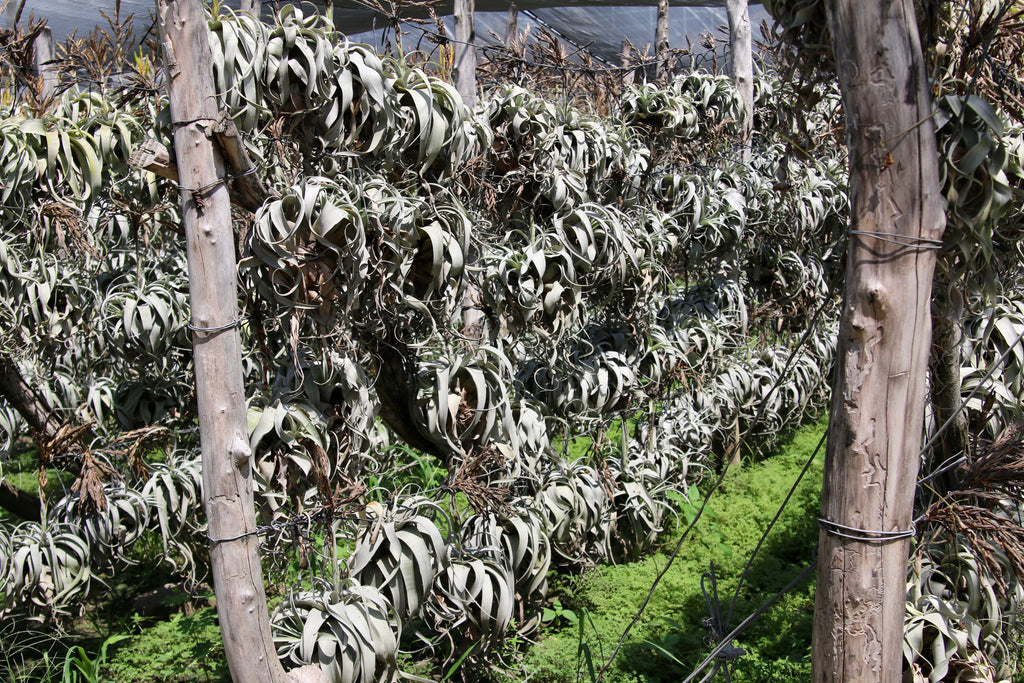
In traditional offset propagation, Xerographica are hung by wires so that the offsets can be removed easily.
Traditionally, growers have preferred the propagation via offsets (asexual) versus through seeds (sexual). Asexual production was preferred due to its reliability and ability to have a plant ready for sale within just a couple of years. Sexual reproduction was originally considered too difficult and not considered until the past decade.
Recently, growers began to fear that relying solely on asexual reproduction would create an overall weaker plant stock of Xerographica. The fear was that if all commercialized Xerographica were propagated by offsets only, every plants would just be a copy of a copy. From seed, however, patience is necessary. Plants may take 8 years or more from germination to an 8 inch diameter plant, what we would sell as large.
Out of necessity to increase both genetic diversity and the number of plants on the farms, a few nurseries have started the arduous process of growing Xerographica by seeds. This process involves waiting for plants to bloom, distributing pollen among other blooming plants, finding the plants that are producing seed (not all do!), and preparing the seed on wind screen material to begin the germination process. The process requires time, patience and investment in greenhouse infrastructure and people.

After blooming, some Xerographica will produce seeds. It is painstakingly collected by hand and moved to screens for germination.
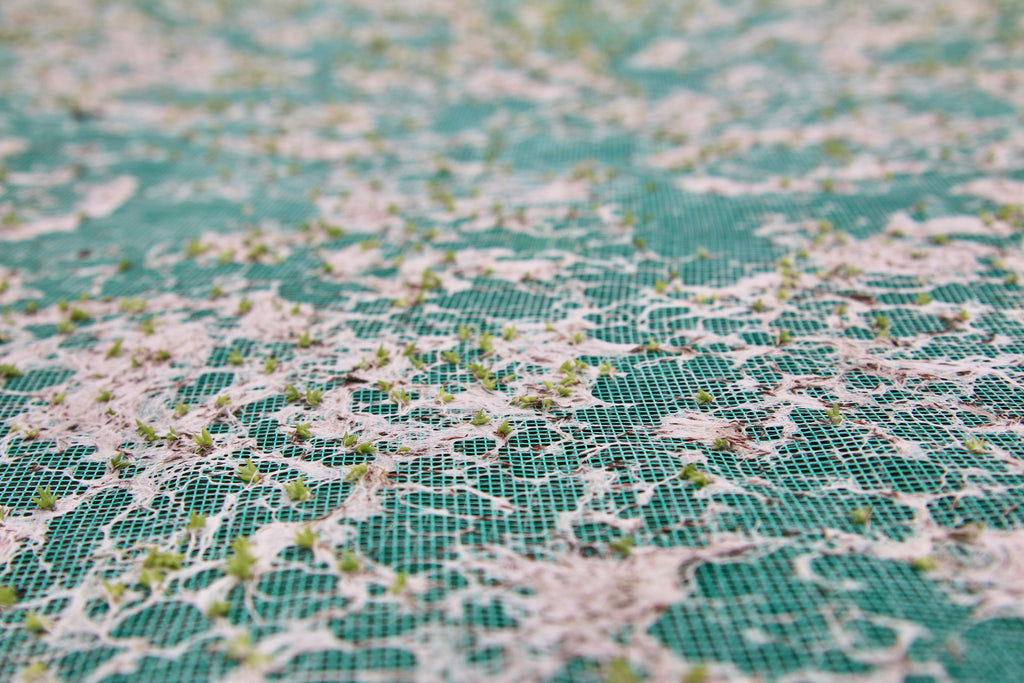
Yes, these are actually newly germinated Xerographica seedlings. They have a long way to go before they will be able to be enjoy in your home!

About two year old seedlings. At this stage they are indistinguishable from other seedling tillandsia.

After three years, these plants still do not resemble xerographica that we know.
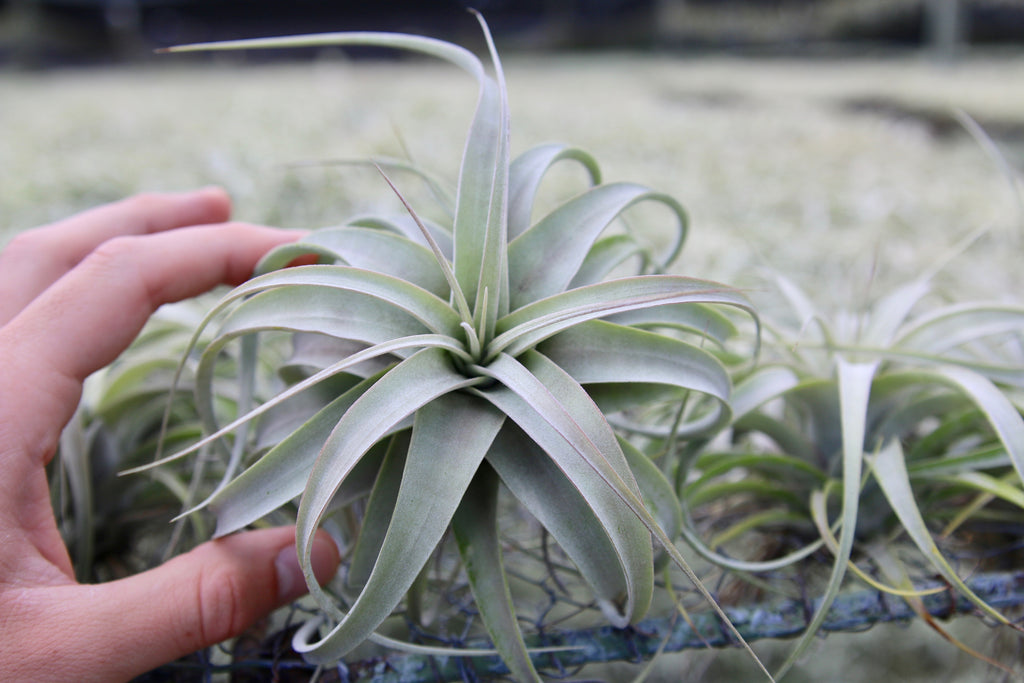
Finally, a transition. By the end of year four, adult shaped leaves begin to grow.
The small plants that we have today are 4-5 year old, hardy seedlings. Besides being more genetically diverse compared to many other commercialized Xerographica, seedling plants also will show a regular adult shape at a much smaller size. The below photo demonstrates that these are grown by seed, as the earliest, smallest leaves, albeit dry, are still attached.
Supporting air plant farms who are undertaking the painstaking investment of hand pollination, time and massive growing space ensures that Xerographica will be around to be enjoy by generations to come. Find our Xerographica seedlings here.
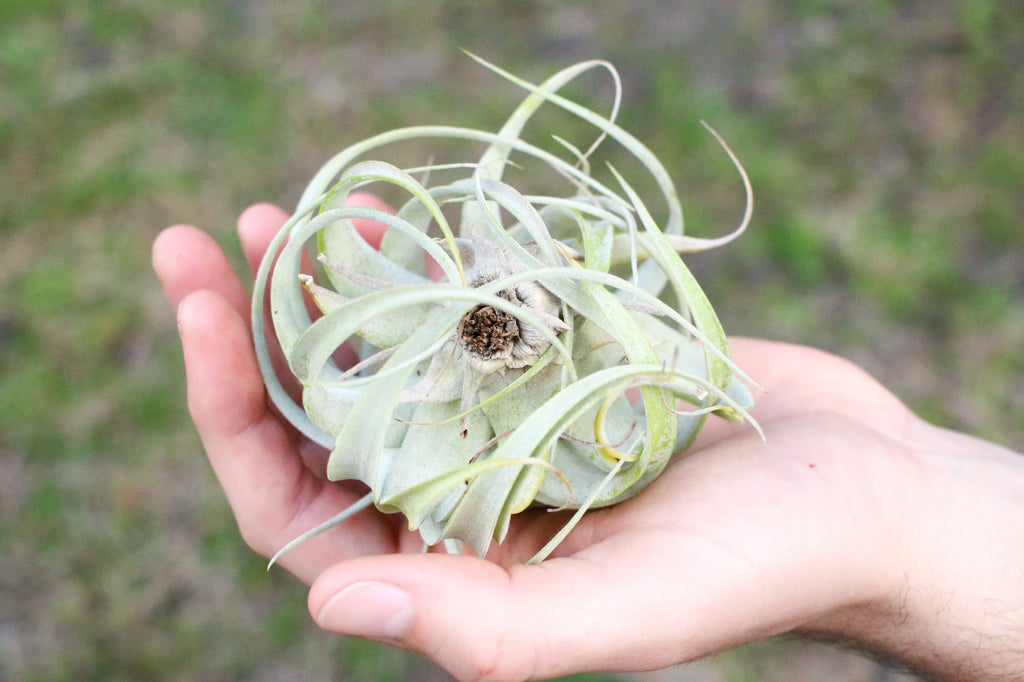
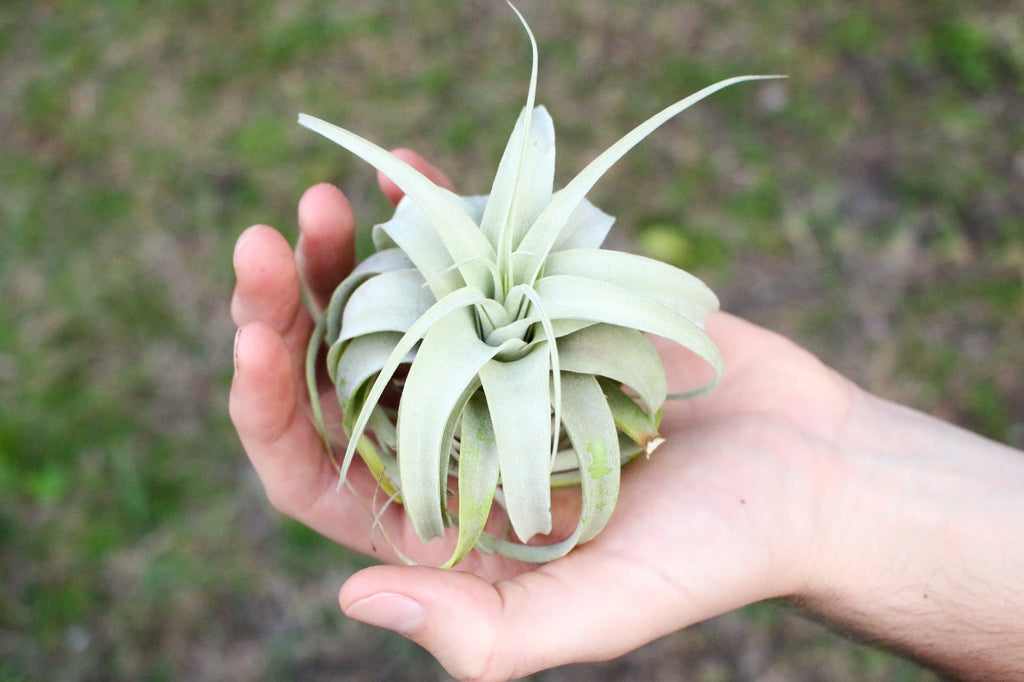
Our seedling Xerographica for sale. Small plants with adult leaf form.


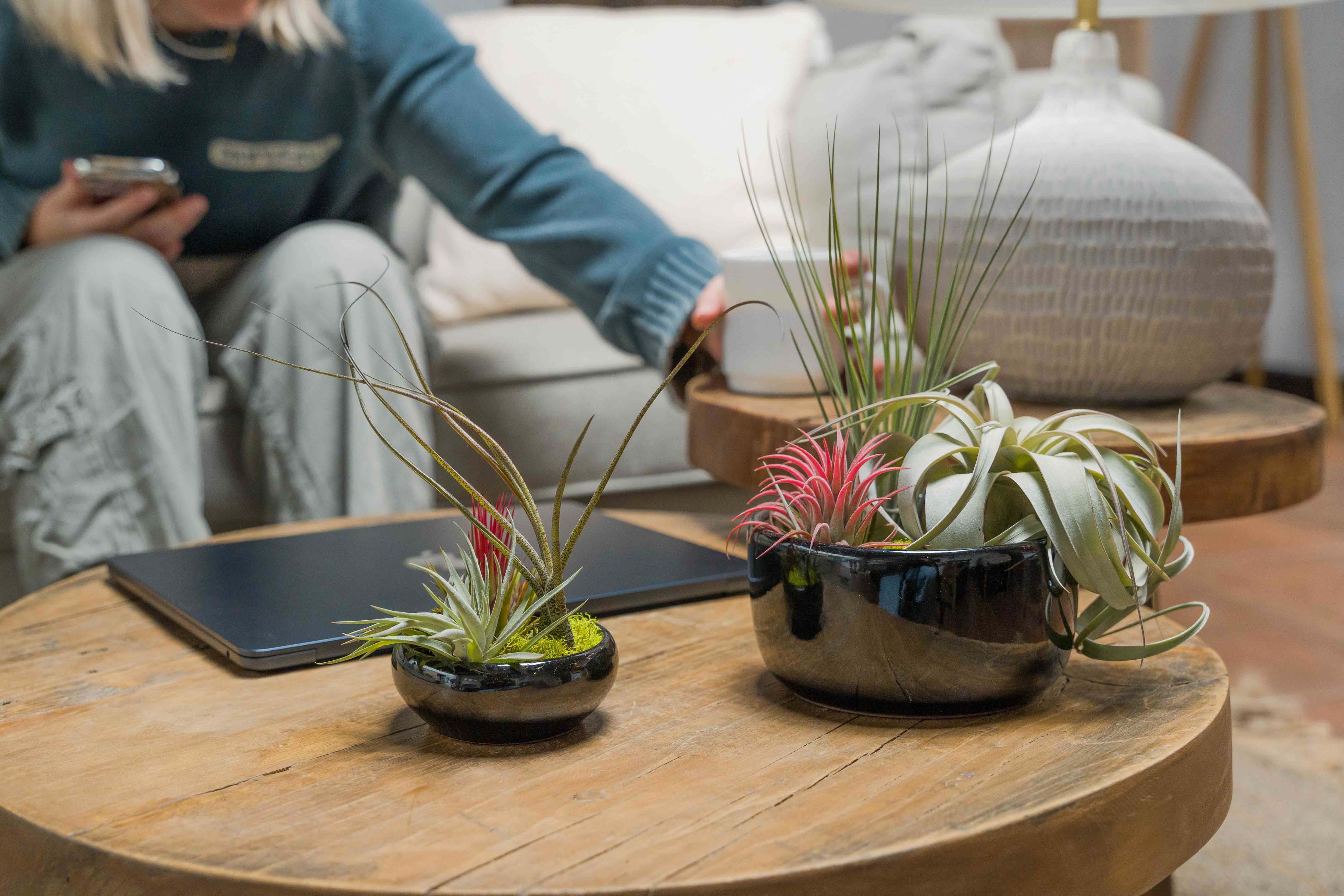
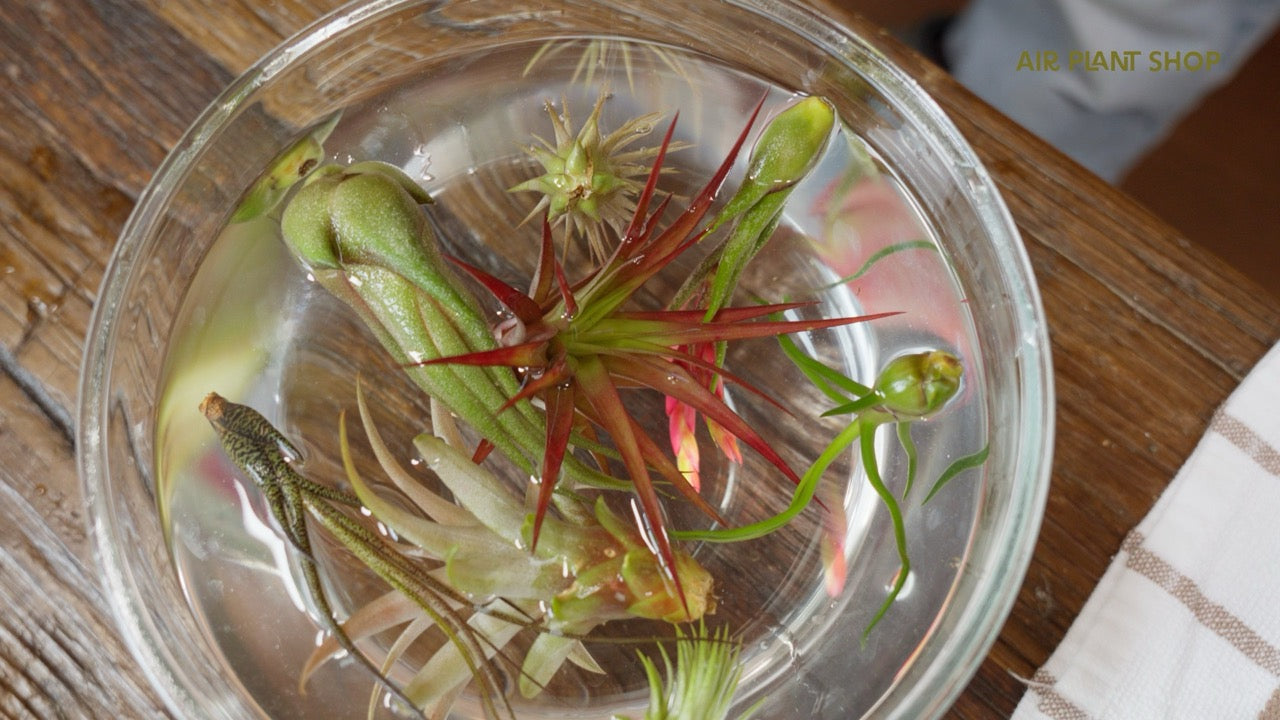

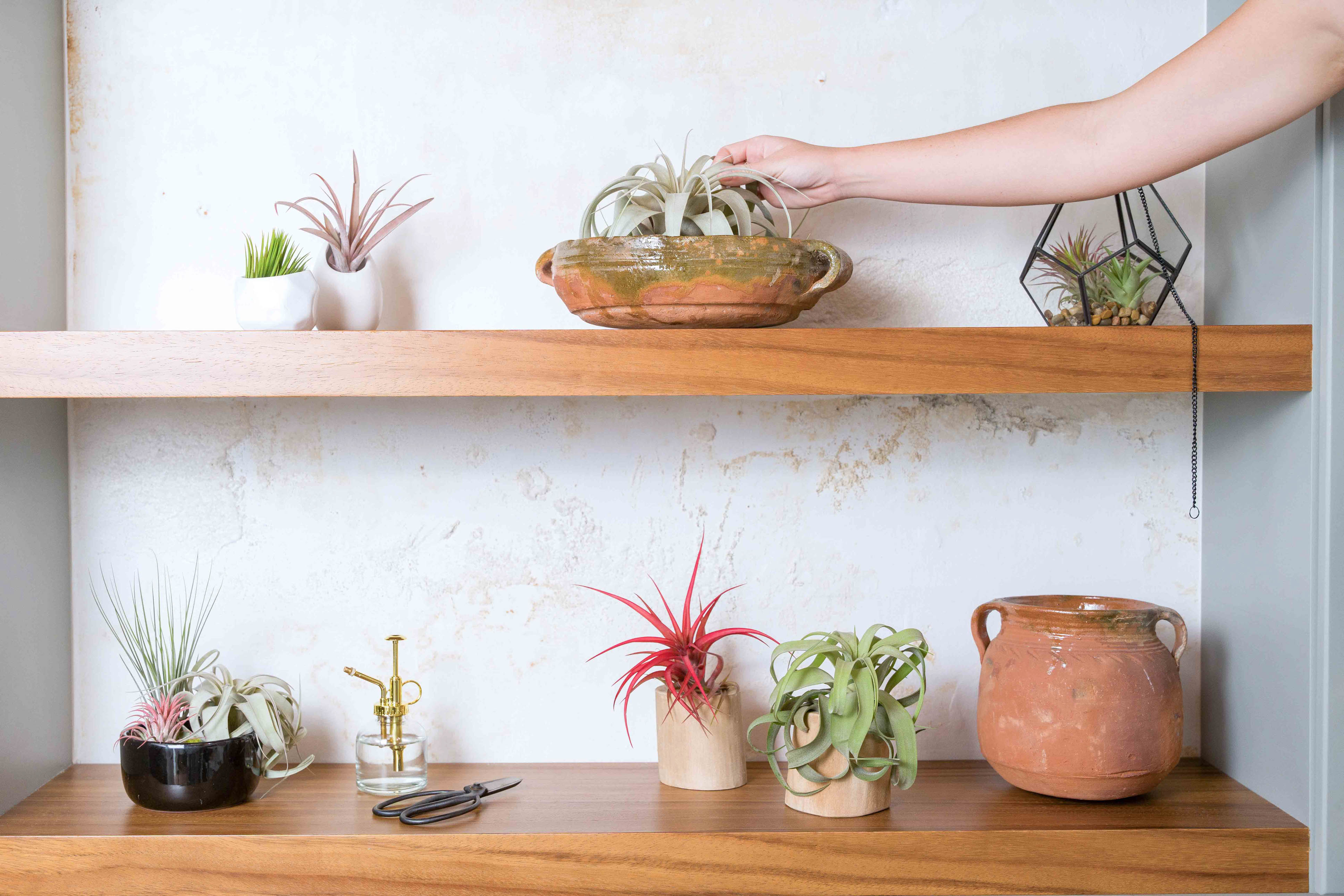

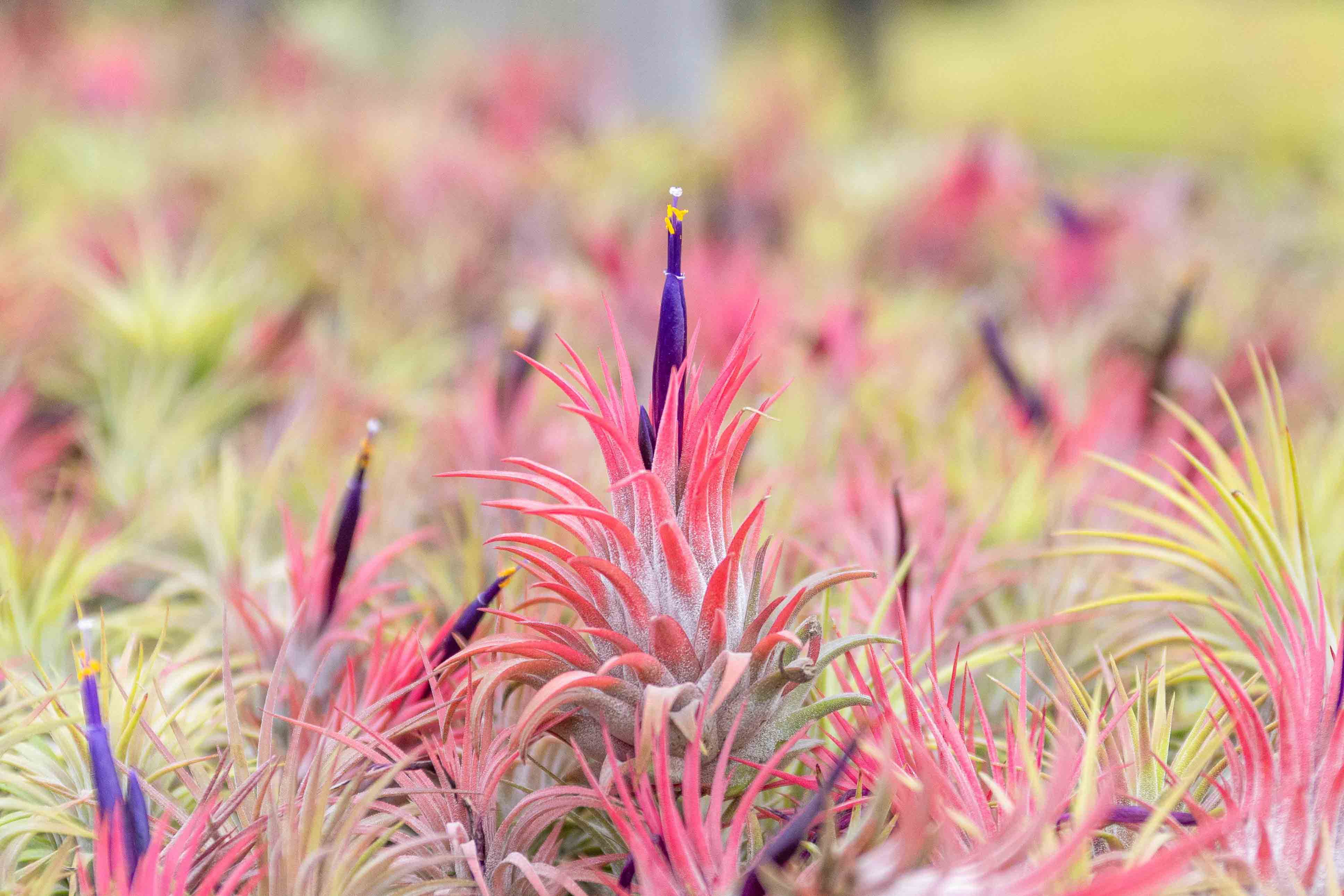


Fascinating! The story makes me want to get some seedlings. I’ll check with my budget and with my other tillandsias, to see if they want new neighbors :)
I love the xerographica but I have never been able to keep one alive… I live in California near Sacramento so it’s pretty dry. Any tips on how I should water them and how to avoid rot?
Leave a comment